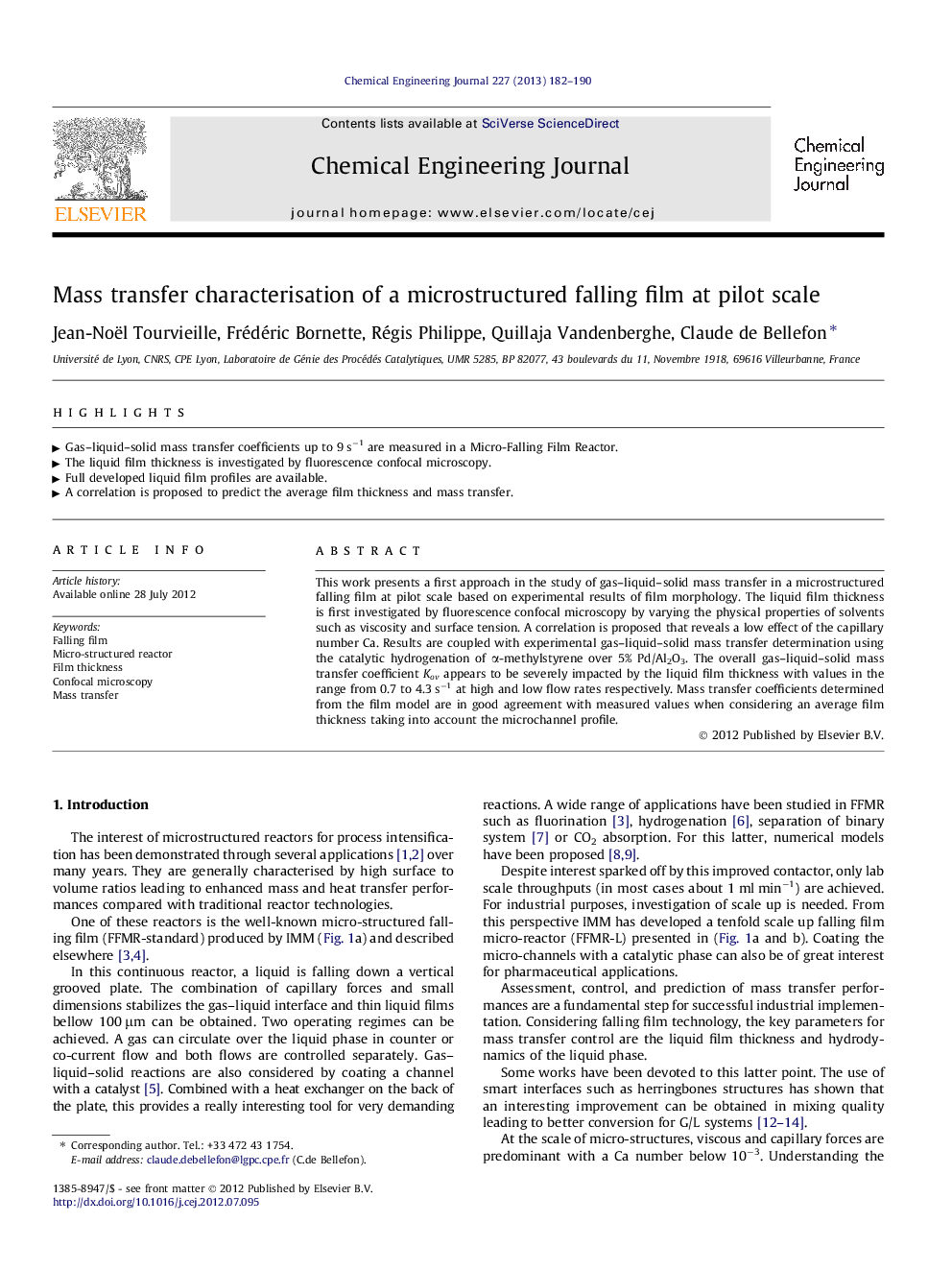| Article ID | Journal | Published Year | Pages | File Type |
|---|---|---|---|---|
| 148536 | Chemical Engineering Journal | 2013 | 9 Pages |
This work presents a first approach in the study of gas–liquid–solid mass transfer in a microstructured falling film at pilot scale based on experimental results of film morphology. The liquid film thickness is first investigated by fluorescence confocal microscopy by varying the physical properties of solvents such as viscosity and surface tension. A correlation is proposed that reveals a low effect of the capillary number Ca. Results are coupled with experimental gas–liquid–solid mass transfer determination using the catalytic hydrogenation of α-methylstyrene over 5% Pd/Al2O3. The overall gas–liquid–solid mass transfer coefficient Kov appears to be severely impacted by the liquid film thickness with values in the range from 0.7 to 4.3 s−1 at high and low flow rates respectively. Mass transfer coefficients determined from the film model are in good agreement with measured values when considering an average film thickness taking into account the microchannel profile.
► Gas–liquid–solid mass transfer coefficients up to 9 s−1 are measured in a Micro-Falling Film Reactor. ► The liquid film thickness is investigated by fluorescence confocal microscopy. ► Full developed liquid film profiles are available. ► A correlation is proposed to predict the average film thickness and mass transfer.
